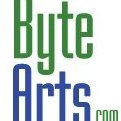Leaderboard
Popular Content
Showing content with the highest reputation on 11/16/22 in all areas
-

Getting FireMonkey iOS development off the ground
eivindbakkestuen replied to eivindbakkestuen's topic in Cross-platform
@Rollo62 Thanks so much for the advice to get XCode going by itself first, that did indeed do the trick! Now, to get some actual work done... 😉 -

Getting FireMonkey iOS development off the ground
Rollo62 replied to eivindbakkestuen's topic in Cross-platform
We have all the same goal in mind, but Apple does its best to keep this goal as far and impossible as it could be 🙂 I'm afraid you have to work through all the docs and threads that are out there, all the time. Embarcadero has a quite good explanation of the whole process for the start, but it may break easily at every little step in every little building block involved (MemberCenter certificates/provisioning, key chain old/double provisioning files, Macos setup, Macos updates, Macos version, Platform CPU, iOS version, iOS/Macos off-sync. versions, XCode version, SDK-Versions, SDK-Missing internal parts, network/wifi connection, Transporter version, AppStore, certificate, DeviceID, Device image, PAServer, Delphi version, ...). Even XCode itself sometimes cannot resolve everything smoothly, you will have to dive deep into all those forums. It would help if you would present a failure message you've got, to get more insights. Usually the best way is to prepare a new ID, certificates, devices in the MemberCenter manually and to use XCode to prepare iOS device for development, starting an empty project on iOS, it can manage provisioning files to some degree. Once it works, usually it stays quite stable for a long time. When you leave it alone for two or three weeks, you might see some provisioning issues and need to re-establish the connection sometimes (at least I have such experience here). -
After the preview at IT-DevCon 2022 in Rome, I'ts time to release a new Open-Source project for Delphi-VCL, which will surely help to modernize "legacy" applications (support up to Delphi XE6 version). StyledButton is a completely customizable VCL "button": thanks to its versatility it is possible to use it in multiple ways, like a classic Delphi button, but with the freedom to define the border, color, aspect (rectangular, circular, squared), or as an "Icon" or "FAB", but above all it is simple to configure thanks to the many templates that "mimic" the behavior of the Bootstrap and Angular buttons, for example... StyledTaskDialog offers the possibility to completely customize the messages of your app, completely replacing the system TaskDialog, and also providing support for animations (using Skia4Delphi of course). With handy demos and examples showing most of the features... please click on the "star" if you like the project! github.com/EtheaDev/StyledComponents Any suggestions or requests for improvements are always welcome!
-
That line should be this instead: MyXMLDocument.DocumentElement.DeclareNamespace('', 'MyString'); Which is equivalent to this: MyXMLDocument.DocumentElement.SetAttributeNS('xmlns', 'http://www.w3.org/2000/xmlns/', 'MyString'); The DeclareNamespace() documentation does not mention that the Prefix parameter can be a blank string, but it is actually supported. This will treat the attribute as an actual namespace declaration in the DOM, even though it doesn't have a prefix assigned. It should also assign the 'MyString' namespace to the DocumentElement since that element doesn't have a prefix assigned, either. You are creating the element, but you are not assigning any text to it, which is why the element appears as </founder>. You need to add this after calling AddChild(): FounderNode.Text := 'Krishna'; Also, you may or may not need to specify the desired namespace when calling AddChild(), as well (this part I always forget about when exactly a namespace should be specified and when it can be inherited from the parent element - once you start dealing with namespaces in XML, you will find that you need to specify namespaces in add/insert and search operations more often than not): FounderNode := MyXMLDocument.DocumentElement.AddChild('founder', 'MyString');
-
its my own class for generating output xml about errors in source file you can take only this part try FXMLDocument := CreateOleObject('Msxml2.DOMDocument.6.0') as IXMLDomDocument2; FXMLDOMSchema := CreateOleObject('Msxml2.XMLSchemaCache.6.0') as IXMLDOMSchemaCollection2; FXMLDOMSchema.add('', xsd_file); FXMLDocument.Async := false; FXMLDocument.resolveExternals:= false; FXMLDocument.validateOnParse := false; FXMLDocument.setProperty('MultipleErrorMessages', true); FXMLDocument.load(xml_file); FXMLDocument.schemas := FXMLDOMSchema; FXMLParserError := FXMLDocument.validate as IXMLDOMParseError2; and part for error check finally if (FXMLParserError.errorCode <> 0) then begin ////////////////////////////////////////////////// with FXMLParserError.allErrors do for i:= 0 to Length - 1 do //// here you can log errors or doing somethings else
-
uses Xml.XMLIntf, Xml.XMLDoc; procedure TForm1.Button1Click(Sender: TObject); var MyXMLDocument : IXMLDocument; FounderNode : IXMLNode; begin MyXMLDocument := TXMLDocument.Create(nil); MyXMLDocument.Active := true; MyXMLDocument.Version:='1.0'; MyXMLDocument.DocumentElement := MyXMLDocument.CreateNode('ab', ntElement,''); MyXMLDocument.DocumentElement.DeclareNamespace('xsi', 'https://www.guru99.com/XMLSchema-instance'); MyXMLDocument.DocumentElement.DeclareNamespace('xsd', 'https://www.guru99.com/XMLSchema'); MyXMLDocument.DocumentElement.SetAttributeNS('xmlns', '','MyString'); FounderNode := MyXMLDocument.DocumentElement.AddChild('founder'); FounderNode.NodeValue:='Krishna'; MyXMLDocument.SaveToFile('TestOne01.XML'); MyXMLDocument.Active := false; end; You have to set the version and MyString should be the 3rd parameter not the second one.
-
I have done this myself. I don't know of a guide to doing it. I'd just recommend to familiarise yourself with FMX first. You will have to rebuild your forms from scratch. You can then copy and paste most of the code and link the events, but some changes will be needed. The drawing commands are different and you need to get used to wrapping drawing commands with BeginScene and EndScene. Code using strings may need to be modified because of unicode. Finally, some visual components are just different and have differently named properties (the most common is that you will have to change .Caption to .Text). Other than that it's not too bad and you get quicker once you get into it.
-

Howto handle Android BluetoothLE permissions that are compatible to API29,30,31 ?
DelphiMT replied to Rollo62's topic in Cross-platform
I have an app that uses Bluetooth LE and here's what I had to do to get it working on Android 12 (and above), as well as Android 11 and earlier. I am using RAD Studio 11.2 Alexandria. 1. Edit the AndroidManifest.template.xml file in the project directory to add a special entry for the BLUETOOTH_SCAN permission, so it looks like this: .... <uses-sdk android:minSdkVersion="%minSdkVersion%" android:targetSdkVersion="%targetSdkVersion%" /> <!-- for this next line to work, uncheck the "Bluetooth Scan" from projects "uses" options --> <uses-permission android:name="android.permission.BLUETOOTH_SCAN" android:usesPermissionFlags="neverForLocation" /> <%uses-permission%> .... NOTE: this is just a snippet from the template file showing the line I added, with a comment line above it. 2. In the project options dialog, edit the "Uses Permissions" section and remove the "Bluetooth Scan" option. This is necessary since that option is now already included in the manifest template, and if you select this option in the project options then RAD studio will add the bluetooth scan option to the output manifest, but WITHOUT the usesPermissionFlags attribute. I have no idea if this is the best way to workaround this issue, but it works for me. I've tested it on devices running Android 10, 11, 12, and 13. Hope this helps. -
Time with TZ is independent from any system settings
-
Why not create your own ShowMessage function? After all it is simply a modal form that you can easily build yourself to fit your needs.
![Delphi-PRAXiS [en]](https://en.delphipraxis.net/uploads/monthly_2018_12/logo.png.be76d93fcd709295cb24de51900e5888.png)






